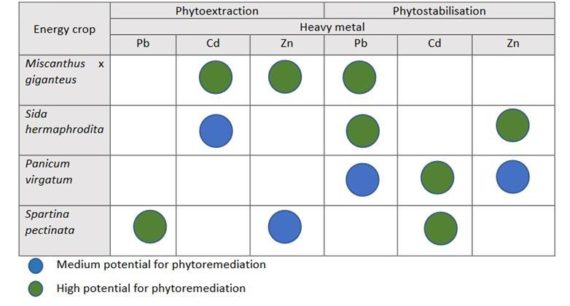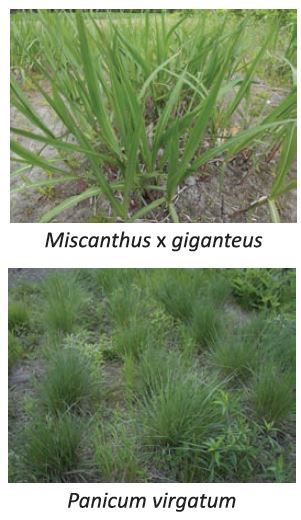
Phytoremediation driven energy crops production on heavy metal degraded areas as local energy carrier
Recently in the Institute for Ecology of Industrial Areas a four-year international project Phyto2Energy has been completed. The project aimed at developing and testing in field conditions an innovative approach combining phytoremediation of heavy metal contaminated areas with production of energy crops, and their conversion into energy using the gasification process.
In the cultivation of energy plants the researchers from Poland, Germany and Romania see a remedy for agricultural land and post-industrial wasteland contaminated by industry. This innovative approach is an opportunity for ecological and economic renewal of these areas.
Phyto2Energy project allowed us to gain many interesting experiences and broaden our knowledge about the potential implementation of the approach combining phytoremediation of areas contaminated with heavy metals with the production of energy plants and their conversion into energy using gasification.
Our goal was to demonstrate that such an approach can become an economically viable alternative to the management of agricultural and post-industrial areas contaminated with heavy metals. Innovative solutions have been developed in close cooperation of science and business. Cooperation of the international consortium that was created for this project aimed at the development and transfer of knowledge based on the exchange of personnel between scientific units and enterprises. The scientific units were represented by Helmholtz Zentrum München - German Research Centre for Environmental Health, Silesian University of Technology, Institute of Thermal Technology, and IETU. Representatives of the business sector were German VITA 34, ProBiotics Polska and the Institute for Studies and Power Engineering from Romania - says Dr. Marta Pogrzeba, Head of the Remediation Team at IETU.
The use of plant biomass for energy purposes is constantly increasing due to the attractiveness of this fuel as a renewable resource. At the same time - as more than 15 years of research conducted by IETU have shown - some species of energy plants have specific mechanisms that allow the uptake and accumulation of toxic elements such as lead and cadmium in tissues.
It is estimated that there are almost 800 000 km2 of contaminated or potentially contaminated land in Europe. One third of them are areas contaminated with heavy metals - emphasises Dr. Jacek Krzyżak, one of the implementers of the Phyto2Energy project - This problem largely affects the countries of Central and Eastern Europe. It is estimated that in Poland even 10 percent of agricultural land is set aside and not used for agricultural purposes.
This is due to various reasons, including unfavourable climatic conditions, poor soil quality or contamination caused by industrial activity. Agricultural land not used for its intended purpose due to environmental contamination includes also post-industrial wasteland.
An international team of researchers focused on three research topics:
- appropriate selection of energy plant species
- optimum cultivation method for the target land use pattern
- thermal conversion of the produced biomass to energy in an efficient and environmentally safe manner
Plant species and the way of their cultivation
The selection of plant species and the way of their cultivation in the degraded environment must ensure obtaining a satisfactory quality and quantity of the biomass yield, as well as the level of soil remediation adequate to the planned land development - emphasises Dr. Marta Pogrzeba.
Field experiments were conducted for four years (2014-2018) in two areas contaminated with heavy metals: in Poland (arable land) and in Germany (post-industrial area). Four species of plants were examined: Miscanthus giganteus, Sida hermaphrodita, Spartina pectinata, and Panicum virgatum. These are species of high efficiency and suitability for the production of biomass for energy purposes which are commonly used in phytoremediation technologies.
On post-industrial wasteland, often heavily contaminated with lead, cadmium or zinc, the carried out research enabled the identification of energy plant species and methods of their cultivation, thanks to which the biomass yield will be as large as possible with the relatively low content of heavy metals accumulated in it - says Dr. Jacek Krzyżak.
The obtained research results allowed grouping the tested species of energy plants depending on their suitability for phytoextraction (soil purification) and phytostabilisation of pollutants (the possibility of safe biomass production, despite the presence of impurities in the soil).
Guidelines for cultivation of energy crops on contaminated soils were also developed.
The usefulness of the tested energy plant species for phytoremediation of soil contaminated with heavy metals

Species of energy plants


Microbial support
In addition, under the project microbiological research on the use of bacteria isolated from plant tissues and rhizosphere (endophytes and rhizospheric bacteria) to stimulate the growth of energy plants and absorption of heavy metals (microbially supported phytoremediation) was carried out.
It is an interesting group of microorganisms that researchers have been paying special attention to in recent years - says Prof. Grażyna Płaza - One of the latest trends in environmental biotechnology is the use of endophytic and / or rhizospheric bacteria to support phytoremediation processes, in that phytoremediation of areas contaminated with heavy metals.
Among the above-mentioned bacteria there is a group that is particularly popular among scientists, i.e. Plant Growth-Promoting Endophytes (PGPE). These microorganisms, through a number of different mechanisms, stimulate the growth of their host-plants, enable the increase of biomass and improve its lifetime. The most important mechanisms include: nitrogen binding, phytohormone production, synthesis of 1-aminocyclopropane-1-carboxylic acid (ACC) deaminase, increasing phosphorus bioavailability, production of HCN, ammonia, siderophores, pathogen inhibiting compounds and biosurfactants.
During the conducted studies, over 100 endophytes and rhizospheric bacteria were isolated, the majority of which showed plant growth promoting features. On the basis of the isolated strains a prototype of bio-vaccine (bioinoculum) was developed.
Gasification technology
What is very important for the quantity and energy properties of the obtained biomass are agrotechnical measures, in particular the determination of the proper nitrogen and phosphorus fertilisation of plants. The mineral composition of the biomass affects the process of its thermal conversion and the durability of the applied devices. But above all it is important due to environmentally safe processing of biomass into energy and disposal of products obtained in this process.
The studies were conducted at the Silesian University of Technology. One of the methods of biomass processing may be gasification. This process involves converting biomass into a combustible gas mixture by partial oxidising at high temperature under the influence of a gasifier (air, oxygen, water vapour or mixtures of these components). The aim of the gasification process is to obtain flammable gas.
The influence of biomass parameters on gas quality and composition as well as final gasification products was examined, with particular emphasis on the behaviour of heavy metals during this process. Researchers from IETU made an assessment of the usefulness of ashes after gasification for fertilisation purposes in soil reclamation. The studied species of energy plants showed a high energy value, and the ashes produced after the gasification process, despite the presence of heavy metals, in most cases could be used as fertilisers in the reclamation of contaminated sites.
What is worth emphasising is the importance of personnel exchange for the transfer of knowledge between companies and scientific units implementing the project in the international dimension. Over 26 people from Poland, Germany and Romania participated in the exchange. In total, researchers spent over 110 man-months during their internships - says Izabela Ratman-Kłosińska, Project coordinator.
This way of conducting scientific research allows not only acquiring new knowledge, but also enables scientists to enrich their professional experience with practical skills obtained through working in an international, multicultural environment.
The result of the project is a number of scientific publications and numerous presentations at international conferences and seminars on phytoremediation or biomass and bioenergy production.
More information about the project results can be found in the Project Resume Book.
Details on the project results are available at: http://www.phyto2energy.eu/Reports.aspx
The project was implemented by an international consortium consisting of six units: Institute for Ecology of Industrial Areas, Poland; Helmholtz Zentrum München, German Research Centre for Environmental Health (GmbH), Germany; Silesian University of Technology, Institute of Thermal Technology, Poland; Institute for Studies and Power Engineering, Romania; ProBiotics Polska; VITA 34, Germany.
More information can be found on the project website: www.phyto2energy.eu
Project coordinator
Izabela Ratman-Kłosińska
Institute for Ecology of Industrial Areas
email:


The Phyto2Energy project was financed from the 7th EU Framework Programme for Research and Technological Development under the Marie Curie-Skłodowska Actions.








